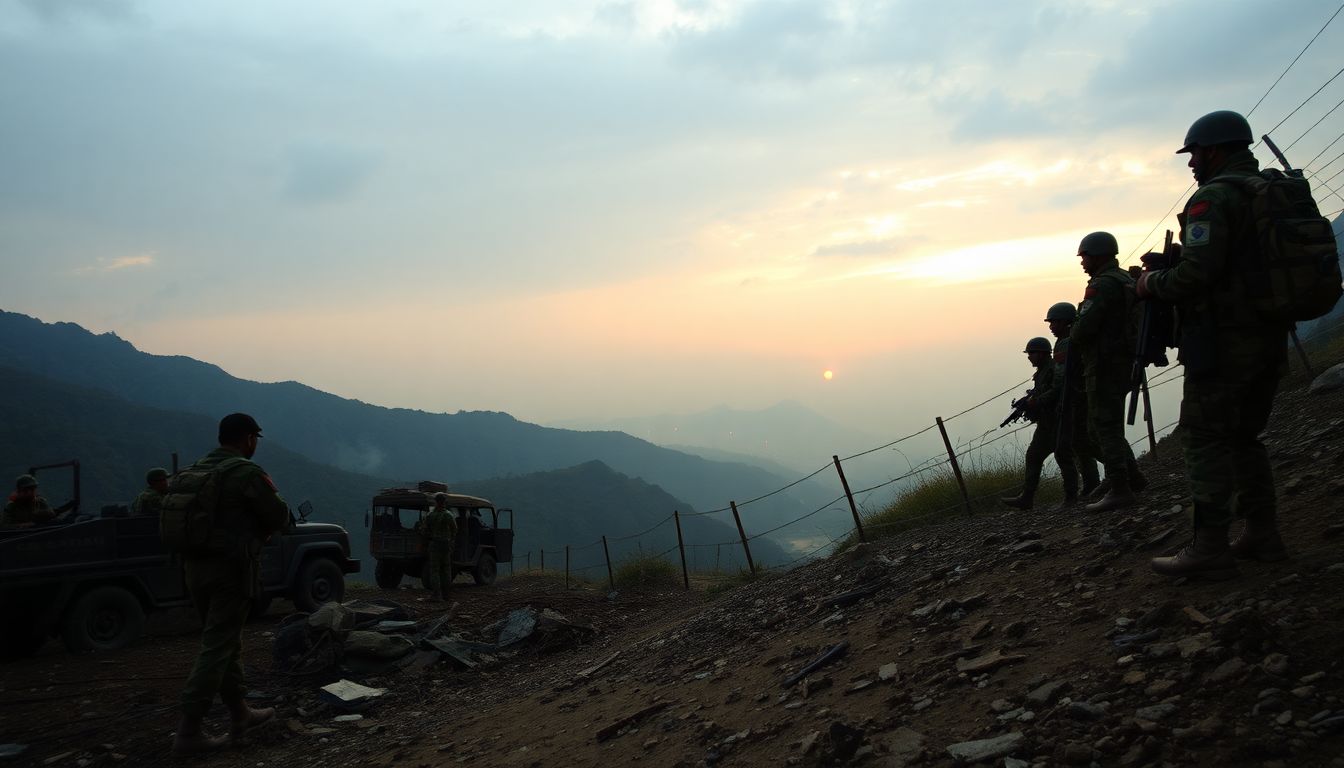Introduction
The recent breach of the ceasefire along India-Pakistan borders has grabbed headlines again. For the ninth straight time, Pakistan has crossed the line of peace, raising tensions in the region. Such continuous violations aren’t just small skirmishes; they threaten the fragile peace that has existed for years. These incidents matter because they impact millions of lives and the future of regional stability. Understanding what’s happening now and what it means for everyone is more important than ever.
Background on Ceasefire Agreements Between India and Pakistan
Historical Development of Ceasefire Protocols
Since 2003, India and Pakistan have worked to reduce border violence through various agreements. The most notable was the 2003 ceasefire, aiming to stop cross-border firing. Over the years, multiple rounds of talks and protocols aimed at calming tensions have been signed. Yet, even with these agreements, violations kept occurring, creating a cycle of hope and disappointment.
Previous Violations and Their Outcomes
Past breaches were often met with strong diplomatic words. Sometimes, both sides blamed each other, and peace talks slowed or stopped altogether. For example, breaches in 2016 and 2018 increased mistrust and delays in peace initiatives. Each violation pushed the countries further apart, showing how fragile the peace process really is.
Details of the Ninth Violation
Recent Incident Overview
On a recent date, cross-border firing erupted in the Kashmir region, between Indian and Pakistani soldiers. Official reports say it started in a border village, with shots exchanged across the Line of Control (LoC). This skirmish added to a growing list of repeated violations of the ceasefire agreement.
Verification and Responses
Indian military officials quickly condemned the breach, calling it an act of aggression. Pakistani officials denied any hostile intent, calling the reports false or exaggerated. The United Nations and regional groups also urge restraint, but little concrete action has been seen so far.
Analysis of the Escalation
Underlying Causes
At the heart of these violations lies unresolved disputes over Kashmir. Both nations claim the region, and border tensions often flare up. Political pressures inside each country also play a role. Leaders sometimes see military actions as a way to rally national pride or distract from internal issues. Additionally, Pakistan’s strategic military considerations often influence its border policies.
Implications for Regional Stability
Repeated violations hurt peace talks and trust between India and Pakistan. Each incident risks escalating into larger conflicts, even war. There’s also a real danger of terrorists exploiting these tensions to carry out attacks in either country. Such conflicts threaten not just the borders but regional peace and security as well.
Expert Opinions and International Reactions
Security Analysts’ Perspectives
Most defense experts see these violations as a sign of deeper unrest. They warn that breaking the ceasefire repeatedly makes peace more difficult to achieve. Analysts say future conflicts depend on whether both countries can find new ways to talk and ease tensions.
Statements from International Entities
The United Nations and neighboring countries have called for calm and dialogue. They emphasize that lasting peace only comes through honest negotiations. While international leaders understand the importance of stability, some argue that stronger diplomatic pressure is needed to prevent more violations.
Consequences and Future Outlook
Short-term Impacts
Right now, border troops are on high alert, ready for more clashes. Civilians living near the border face fear and disruption. The violence also hampers daily life and economic activities in affected areas.
Long-term Implications
If violations worsen, India and Pakistan might drift further apart diplomatic efforts. Trust could be lost forever, making peace even harder to rebuild. The region faces a future where conflict becomes the norm instead of the exception.
Actionable Recommendations
Diplomacy remains the best tool to tackle these issues. Confidence-building measures like joint border patrols and talks can help restore trust. Better communication channels will reduce misunderstandings that spark violence. The international community must also play a role in pushing both sides back to dialogue.
Conclusion
The ninth violation of the ceasefire reveals how delicate peace in South Asia continues to be. It’s a wake-up call that more efforts are needed to prevent future clashes. Without renewed dialogue, the risk of larger conflicts grows. The region’s future depends on how quickly India, Pakistan, and the international community work to keep peace alive. Only through genuine cooperation can lasting stability be achieved, protecting millions of lives and securing regional security.

